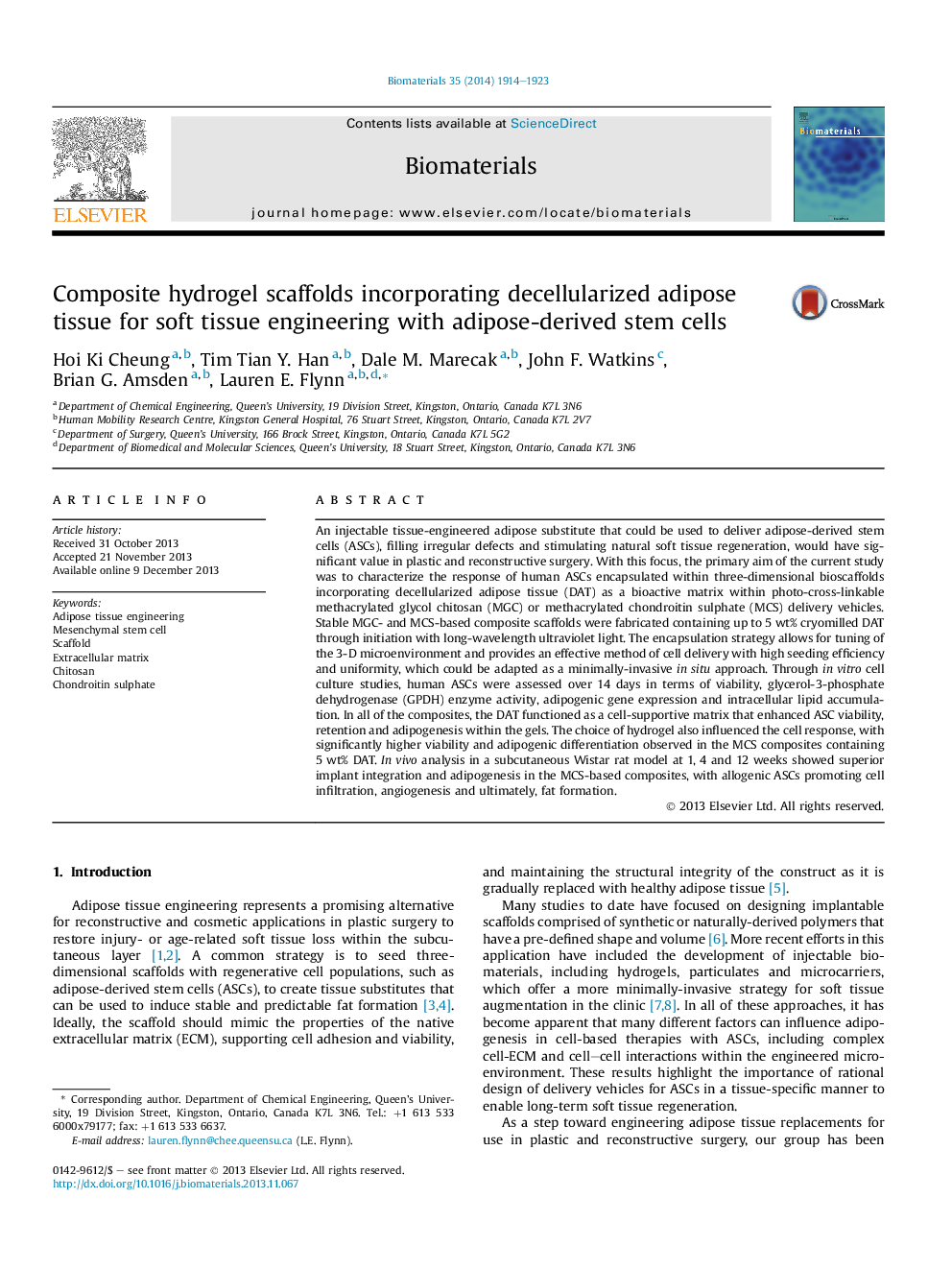| کد مقاله | کد نشریه | سال انتشار | مقاله انگلیسی | نسخه تمام متن |
|---|---|---|---|---|
| 6002 | 453 | 2014 | 10 صفحه PDF | دانلود رایگان |
An injectable tissue-engineered adipose substitute that could be used to deliver adipose-derived stem cells (ASCs), filling irregular defects and stimulating natural soft tissue regeneration, would have significant value in plastic and reconstructive surgery. With this focus, the primary aim of the current study was to characterize the response of human ASCs encapsulated within three-dimensional bioscaffolds incorporating decellularized adipose tissue (DAT) as a bioactive matrix within photo-cross-linkable methacrylated glycol chitosan (MGC) or methacrylated chondroitin sulphate (MCS) delivery vehicles. Stable MGC- and MCS-based composite scaffolds were fabricated containing up to 5 wt% cryomilled DAT through initiation with long-wavelength ultraviolet light. The encapsulation strategy allows for tuning of the 3-D microenvironment and provides an effective method of cell delivery with high seeding efficiency and uniformity, which could be adapted as a minimally-invasive in situ approach. Through in vitro cell culture studies, human ASCs were assessed over 14 days in terms of viability, glycerol-3-phosphate dehydrogenase (GPDH) enzyme activity, adipogenic gene expression and intracellular lipid accumulation. In all of the composites, the DAT functioned as a cell-supportive matrix that enhanced ASC viability, retention and adipogenesis within the gels. The choice of hydrogel also influenced the cell response, with significantly higher viability and adipogenic differentiation observed in the MCS composites containing 5 wt% DAT. In vivo analysis in a subcutaneous Wistar rat model at 1, 4 and 12 weeks showed superior implant integration and adipogenesis in the MCS-based composites, with allogenic ASCs promoting cell infiltration, angiogenesis and ultimately, fat formation.
Journal: Biomaterials - Volume 35, Issue 6, February 2014, Pages 1914–1923
